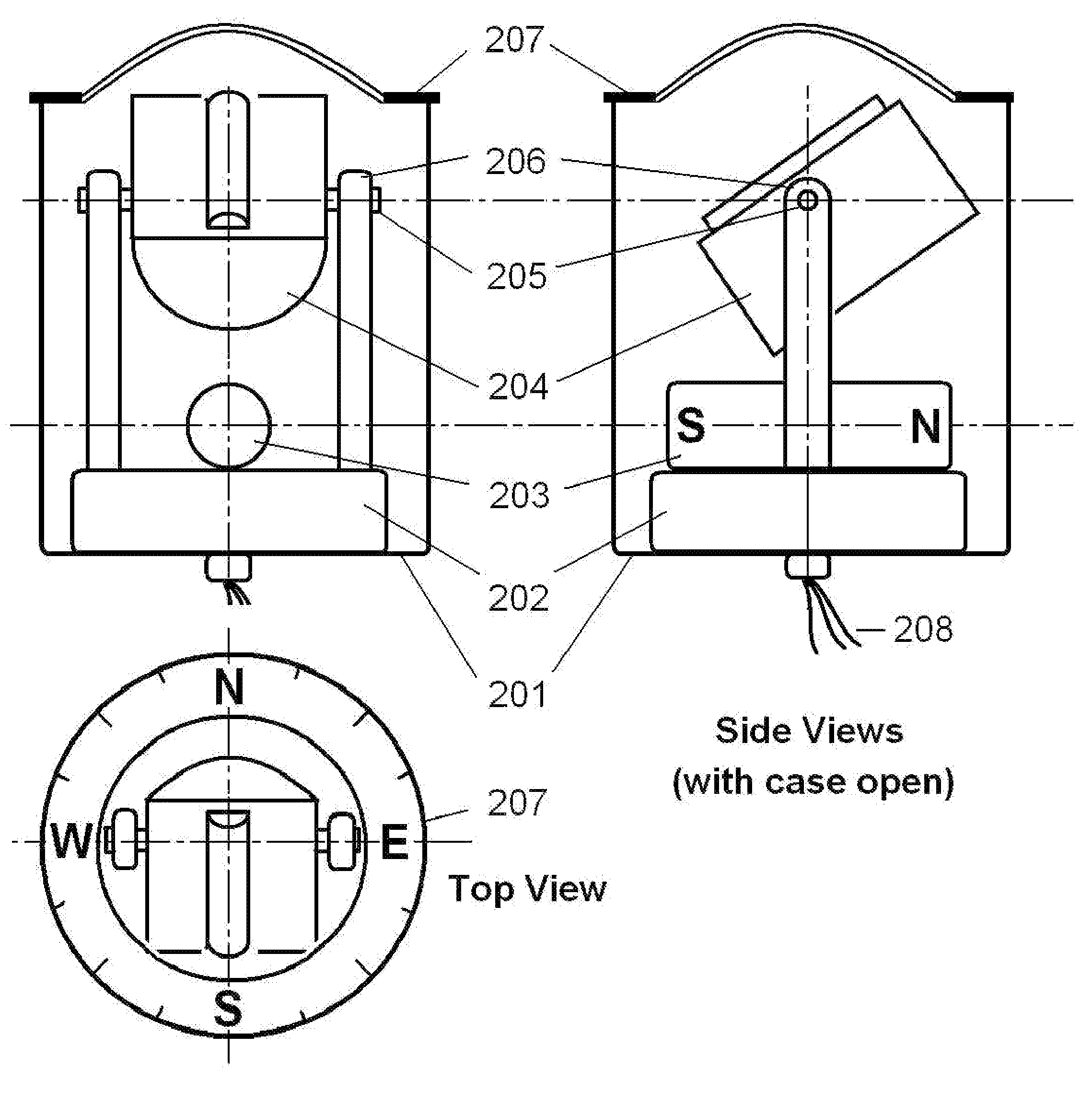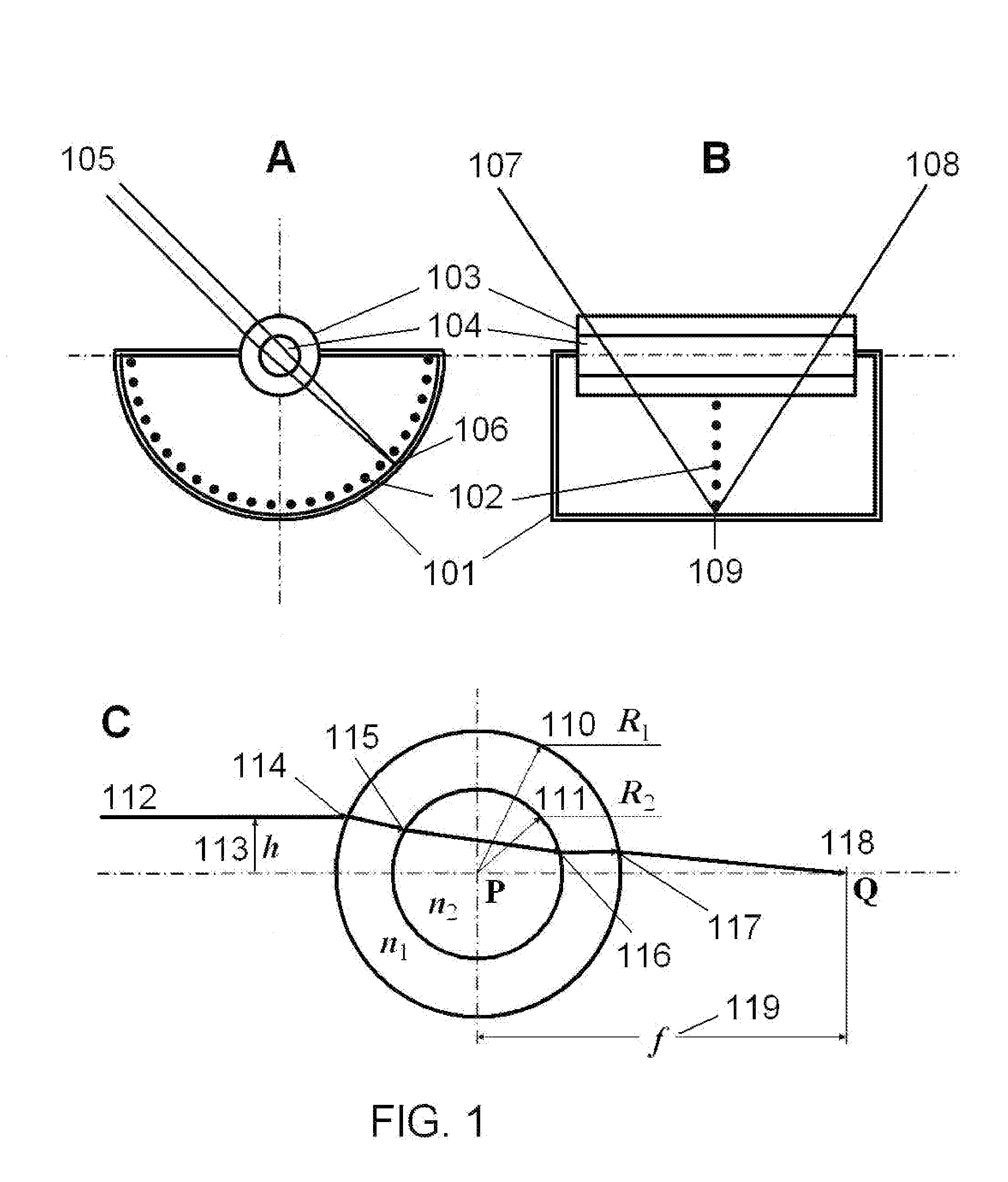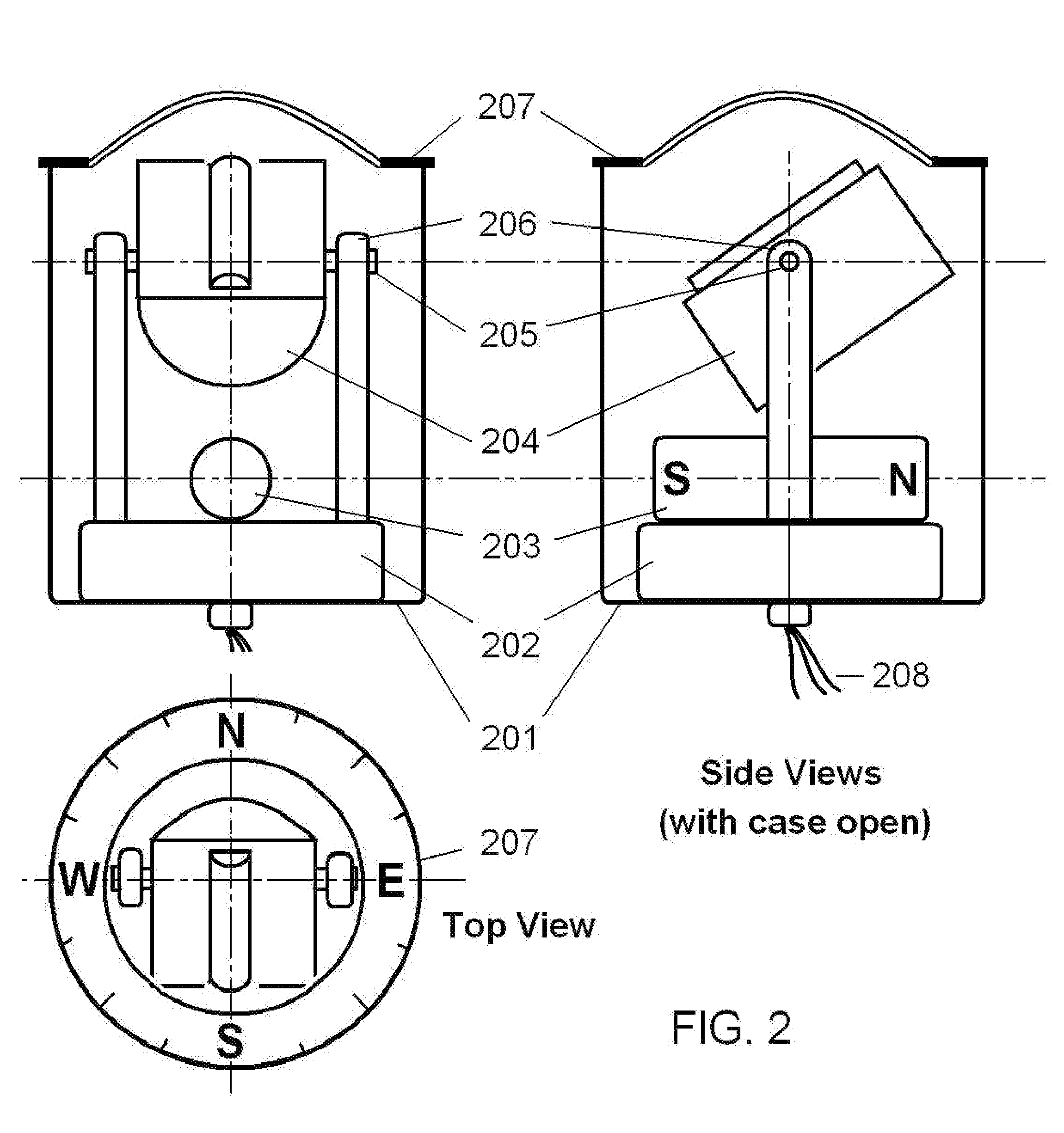Automatic Solar Compass
a solar compass and solar energy technology, applied in the field of automatic solar compass, can solve the problems of complex operation of solar compass, gps signal does not contain direction information, and requires elaborate manual adjustments
- Summary
- Abstract
- Description
- Claims
- Application Information
AI Technical Summary
Benefits of technology
Problems solved by technology
Method used
Image
Examples
Embodiment Construction
[0016]FIG. 1A and B show two cross sections of the detector assembly. It has an opaque and light-tight case 101. An array of photo-detectors 102 is placed at the middle of the case, to form a semi-circle. On the top side of the detector assembly is a cylindrical omni-directional lens, comprises of an outer cylinder 103 and an inner (solid) cylinder 104. The parallel light beams 105 of the sunlight converge at a point 106 on one of the photo-detectors placed on the inner wall of the semi-cylindrical case 101. The length of the cylindrical lens is sufficiently large that the sunlight over more than 47° angle span, 107 to 108, can be projected onto the photo-detector array 102.
[0017]The principle of the cylindrical omni-directional lens is shown in FIG. 1C. It comprises two concentric cylindrical components. The outer cylinder 110 with radius R1 is made of a transparent material with index of refraction n1. The inner cylinder 111 with radius R2 is made of another transparent material o...
PUM
 Login to View More
Login to View More Abstract
Description
Claims
Application Information
 Login to View More
Login to View More - R&D
- Intellectual Property
- Life Sciences
- Materials
- Tech Scout
- Unparalleled Data Quality
- Higher Quality Content
- 60% Fewer Hallucinations
Browse by: Latest US Patents, China's latest patents, Technical Efficacy Thesaurus, Application Domain, Technology Topic, Popular Technical Reports.
© 2025 PatSnap. All rights reserved.Legal|Privacy policy|Modern Slavery Act Transparency Statement|Sitemap|About US| Contact US: help@patsnap.com



